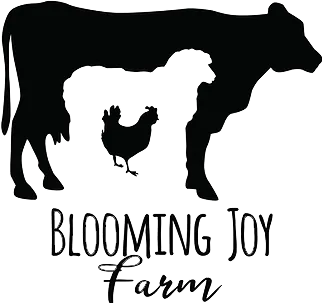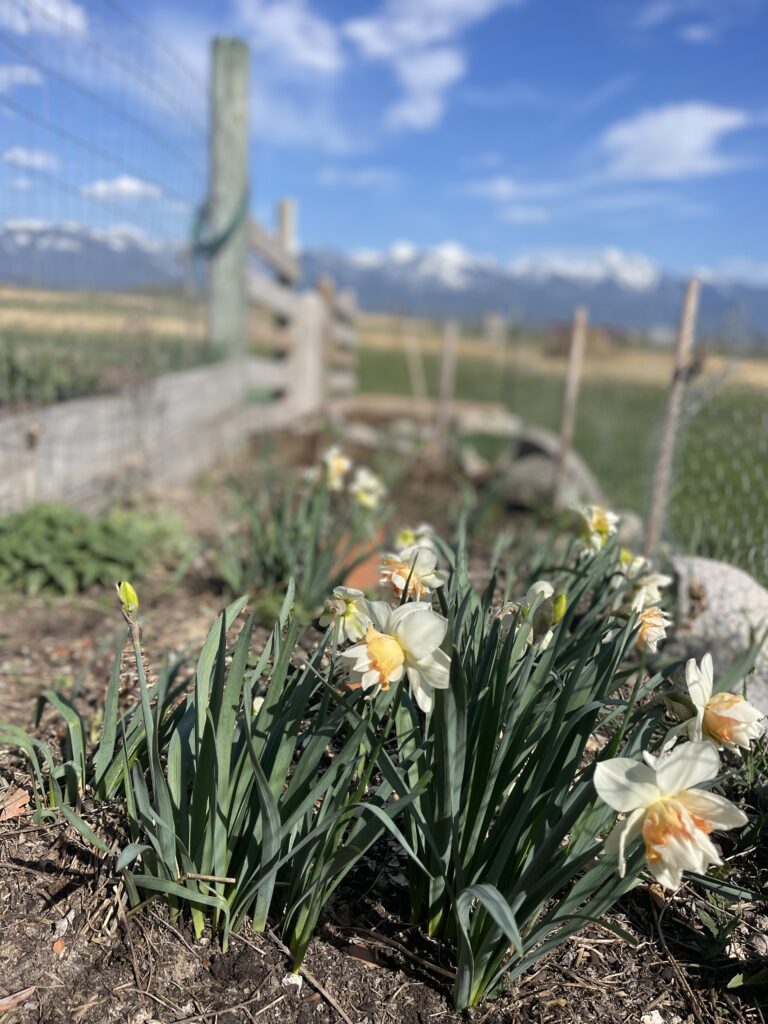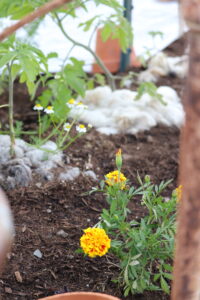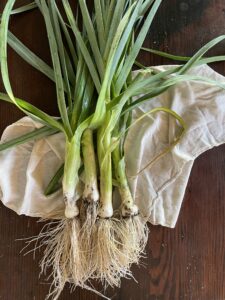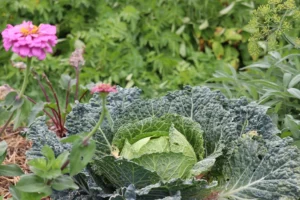The Gardening Race Has Begun
The snow has melted, the days are stretching longer, and that familiar pull toward the soil has begun. Gardening season is officially underway! With seed packets in hand and a fresh sense of anticipation, it’s time to coax new life from the dirt.
I don’t have a fancy setup—just bags of good seed-starting soil, quality seeds, and a sunny south-facing window. Year after year, this simple approach has served me well. To encourage strong germination, I like to create a mini-greenhouse effect by covering freshly planted seeds with a plastic shower cap or using repurposed lettuce and berry containers. This locks in warmth and moisture until the seedlings emerge and start reaching for the sun. Once they do, off come the covers, and I focus on keeping the soil consistently moist.
Wool: A Gardener’s Secret Weapon
This past year, I experimented with using discard wool from shearing as part of my seed-starting and garden care, and the results have been impressive!
For my seed trays, I laid a thin layer of wool at the bottom before adding the planting medium. The seedlings developed strong, healthy root systems, thanks to the continuous moisture retention of the wool layer. When I moved my young plants into outdoor containers, I used the same method—placing a thin layer of wool at the bottom before adding potting soil. I noticed that these plants stayed hydrated much longer than those without the wool layer.
When it came time to plant tomatoes, I took my wool experiment a step further. I top-dressed my tomato plants with a little organic fertilizer, some Epsom salt, and a layer of wool. The results? An abundant harvest of juicy tomatoes! The wool not only provided moisture wicking to the roots but, as it slowly broke down, it also released nitrogen into the soil—a natural and gentle fertilizer.
The Science Behind Wool as Mulch
Using wool as mulch is an old but underappreciated gardening technique. Wool fibers have exceptional water-retention properties, absorbing moisture and slowly releasing it back into the soil. This makes it a fantastic material for drought-prone gardens or for gardeners who want to cut back on watering frequency. Studies have shown that wool mulch can reduce evaporation by up to 50%, keeping the soil damp longer and providing an ideal environment for root growth.
Beyond moisture control, wool provides other benefits:
- Slow-release nitrogen – As wool breaks down, it enriches the soil with nitrogen, a key nutrient for plant growth.
- Pest deterrent – Some gardeners report that wool mulch helps repel slugs and snails, which dislike crawling across its coarse texture.
- Weed suppression – A thick layer of wool helps smother weeds, reducing competition for nutrients and water.
- Soil insulation – Wool helps regulate soil temperature, keeping roots cooler in the summer and protecting against sudden cold snaps.
This year, I plan to expand my use of wool in the garden—mulching my raised beds and experimenting with wool pathways between rows to suppress weeds and hold in moisture. If you raise fiber animals, this is a wonderful way to repurpose discard wool while giving back to your soil in a natural, sustainable way.
Warm-Season Crops and a Favorite Shallot
The first seeds I start indoors are my warm-season vegetables, herbs, and flowers—tomatoes, squash, peppers, and basil. Leeks and shallots, which take their sweet time to germinate, also get an early start. Speaking of shallots, if you’ve never grown them, I highly encourage you to give them a try! The Crème Brûlée shallot from Johnny’s Seeds has become a favorite of mine. It has a lovely mild flavor, keeps well through the winter, and adds a rich, sweet onion note to any dish. Best of all? Chopping them won’t bring tears to your eyes!
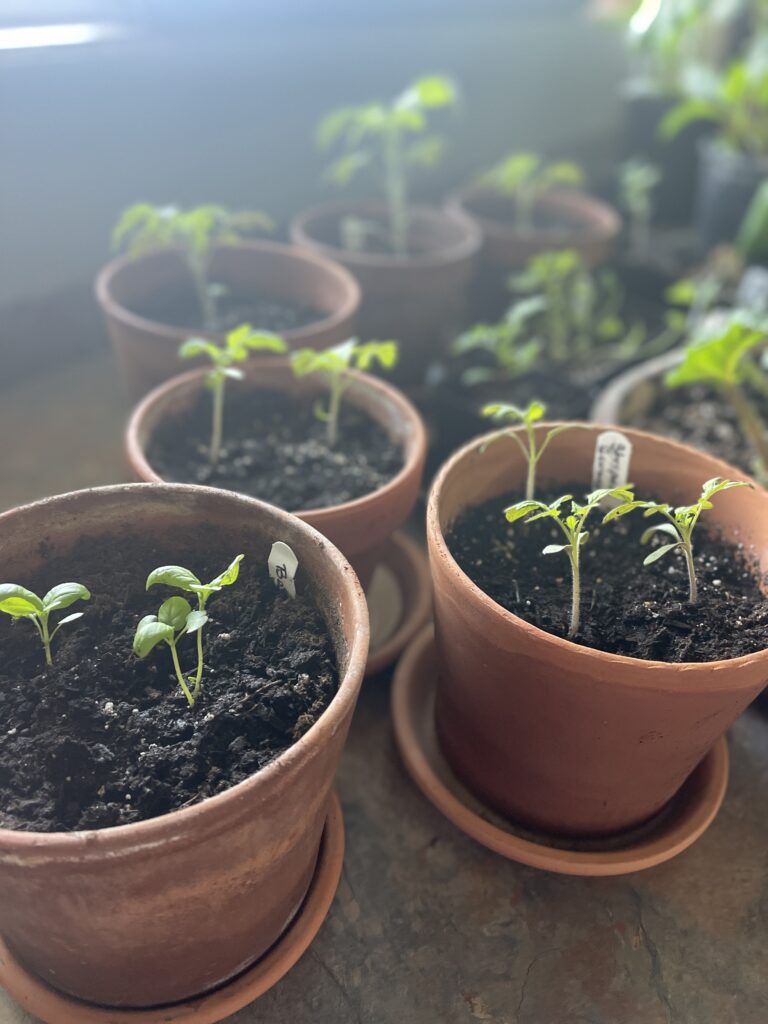
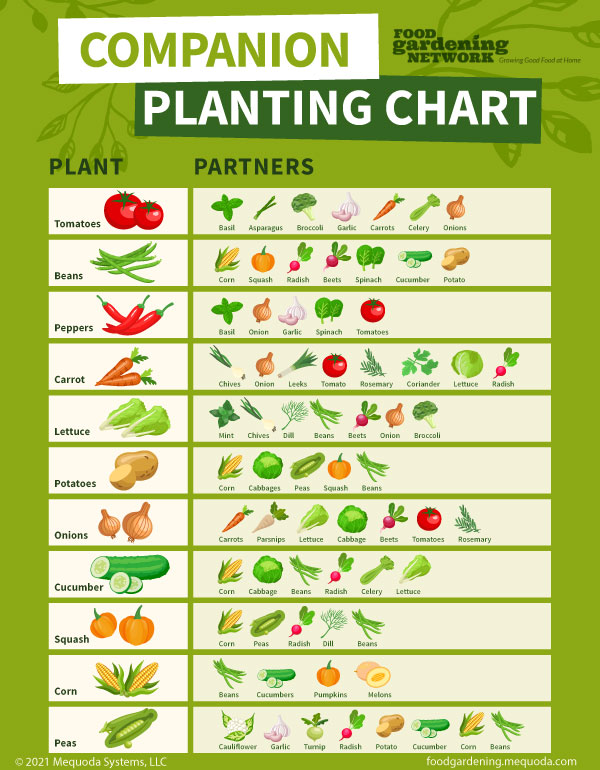
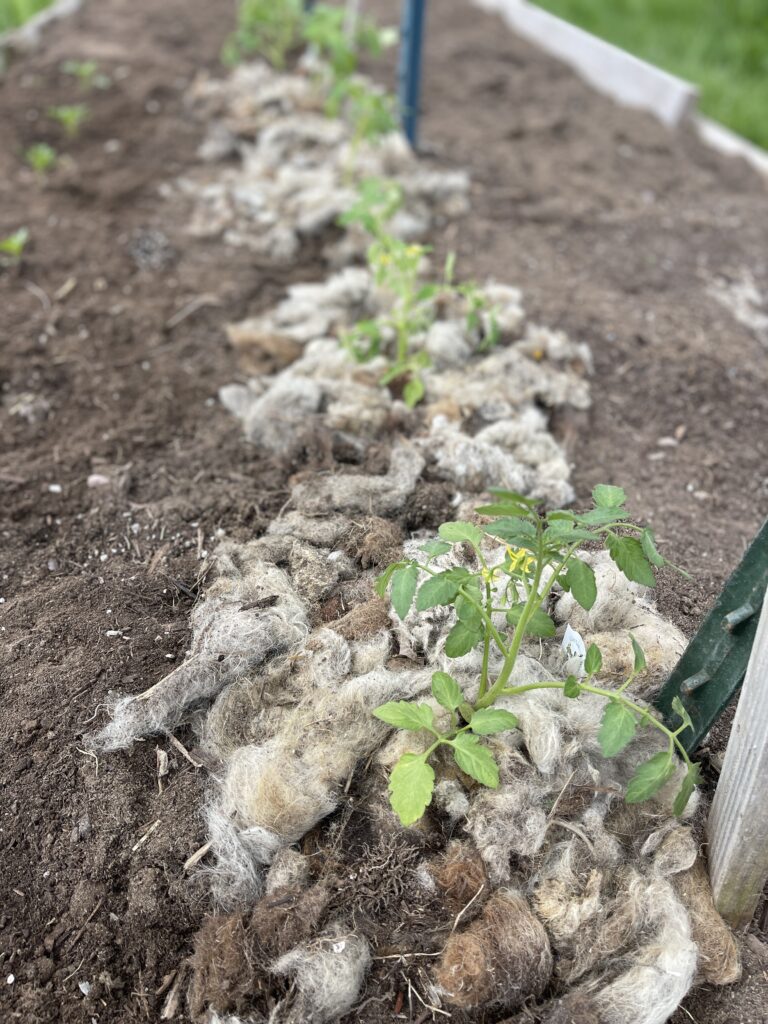
Gardening in Harmony: Companion Planting
For over 30 years, I’ve planned my garden using companion planting, a method of pairing plants that naturally benefit one another. Some plants help by repelling pests, while others provide shade or enrich the soil with nitrogen. There’s something charming about the idea that plants have “friends” who help them grow stronger and more resilient.
As an organic gardener, I rely on these time-tested, chemical-free techniques to keep my soil and plants healthy. Companion planting, combined with crop rotation and healthy soil-building practices, keeps pests at bay while creating a garden that is both functional and beautiful. Flowers, herbs, and vegetables intermingle in a way that’s not only practical but also a delight to walk through.
Take onions and carrots, for example—planting them together helps confuse and repel the carrot rust fly, making for an easy and effective pest deterrent. And then there’s the classic Three Sisters method, where corn, pole beans, and pumpkins grow together in a perfect symbiotic relationship. The corn provides a natural trellis for the beans to climb, the beans enrich the soil with nitrogen, and the sprawling pumpkin vines shade the ground, helping to retain moisture and suppress weeds.
If you’re new to companion planting or looking to refine your garden layout, I highly recommend reading up on this fascinating approach. Below, I’ve included a helpful chart to get you started on designing a garden where plants work together in harmony.
Garden Hands Need a Little TLC
With more time spent outdoors, my hands take a beating from all the digging, planting, and weeding. To keep them soft and nourished, I love making moisturizing lavender lotion bars—a simple, soothing remedy for gardener’s hands and feet. As soon as my lavender plants bloom and are ready to harvest, I steep some of the buds in nourishing oil, which becomes the base for these wonderful little bars. They’ve become a favorite gift among family and friends, and they’re so easy to make!
If you’d like to try them yourself, check out my recipe here or buy it here and see just how simple and delightful homemade lotion bars can be.
Lavender is not only a treat for the senses—it’s a pollinator’s dream. Bees adore it, and planting lavender in your garden provides food for beneficial insects while adding beauty and fragrance to your space. It’s a win-win for both the garden and the gardener!
Are you experimenting with any new techniques in your garden this year? I’d love to hear about it!
